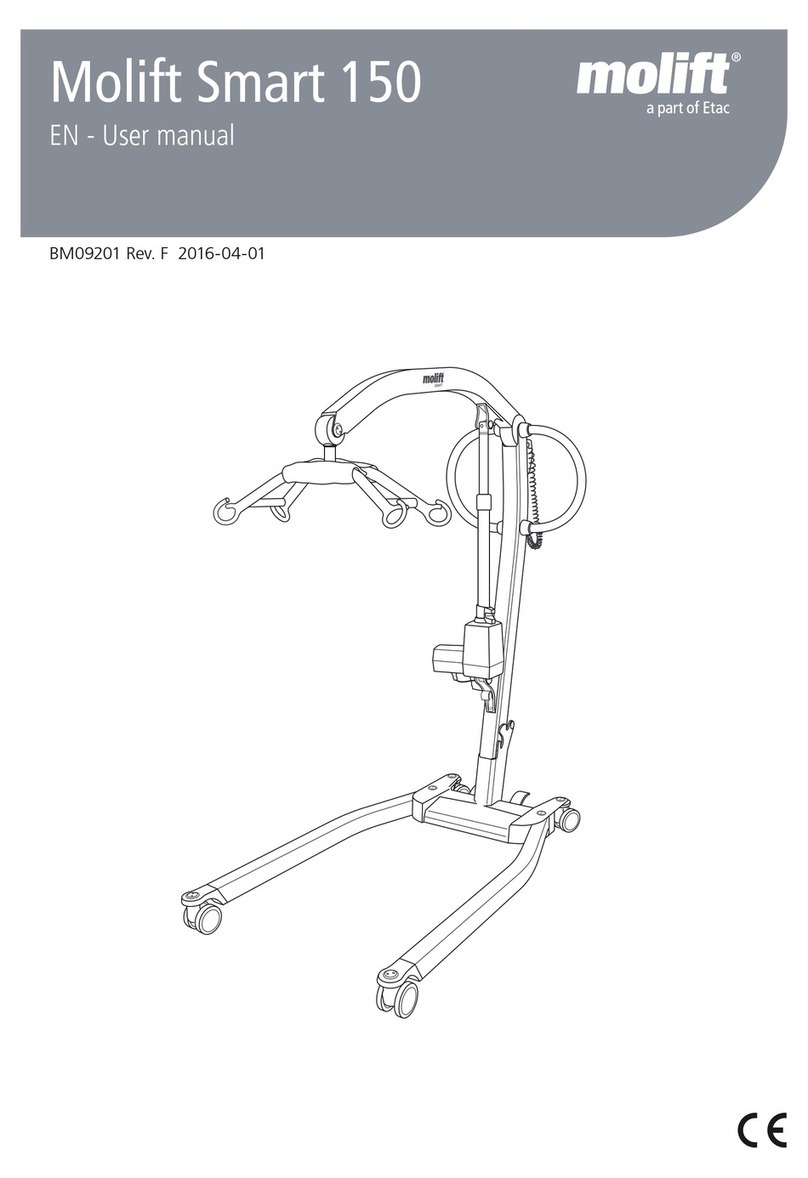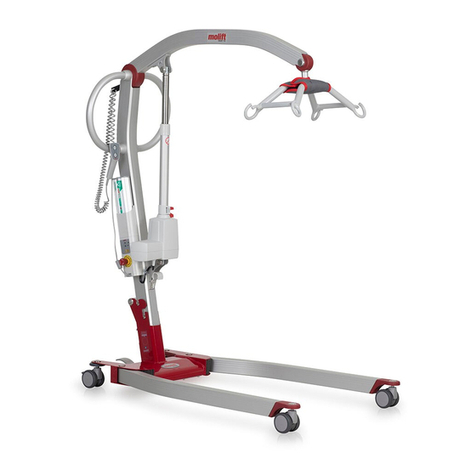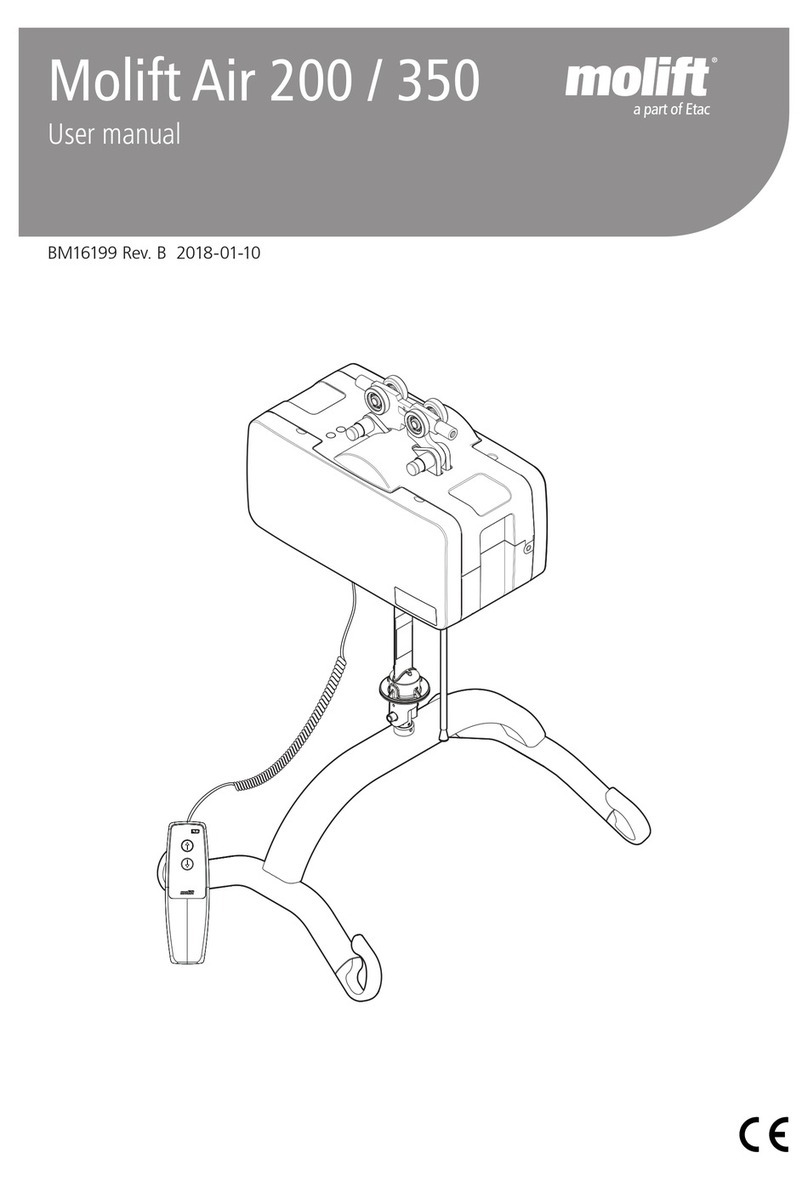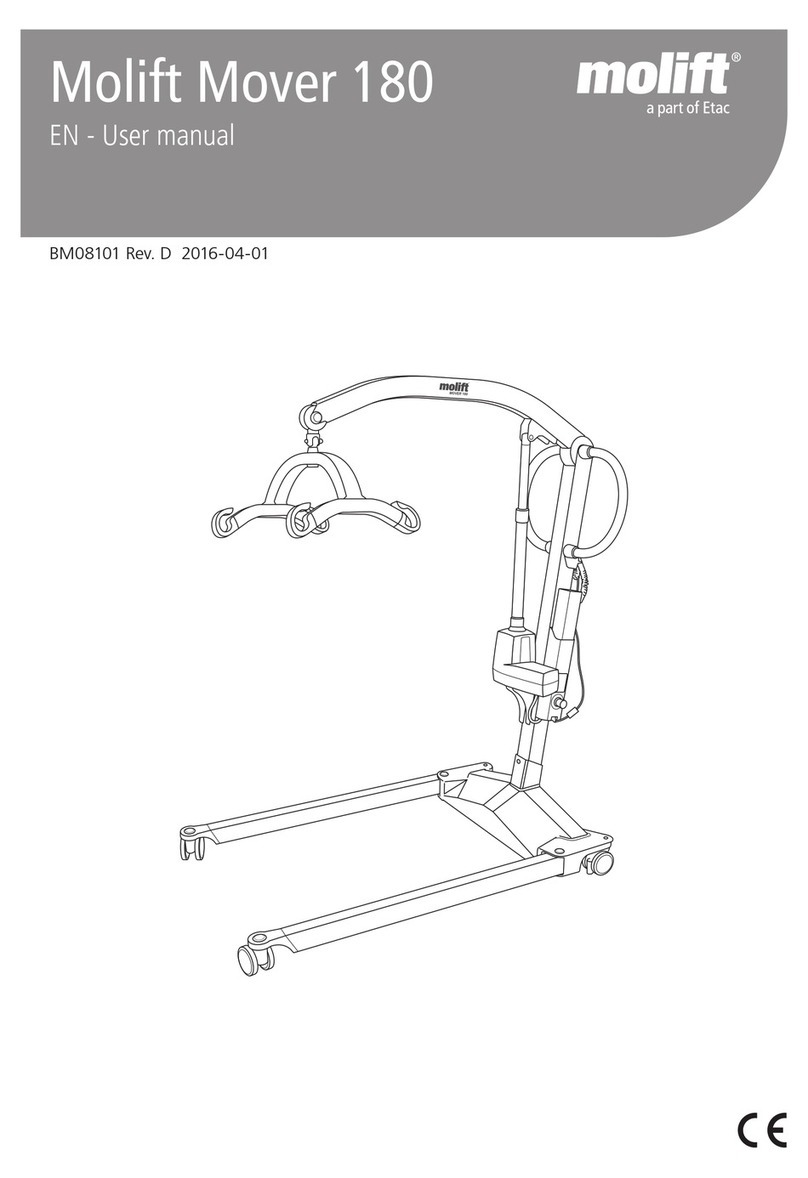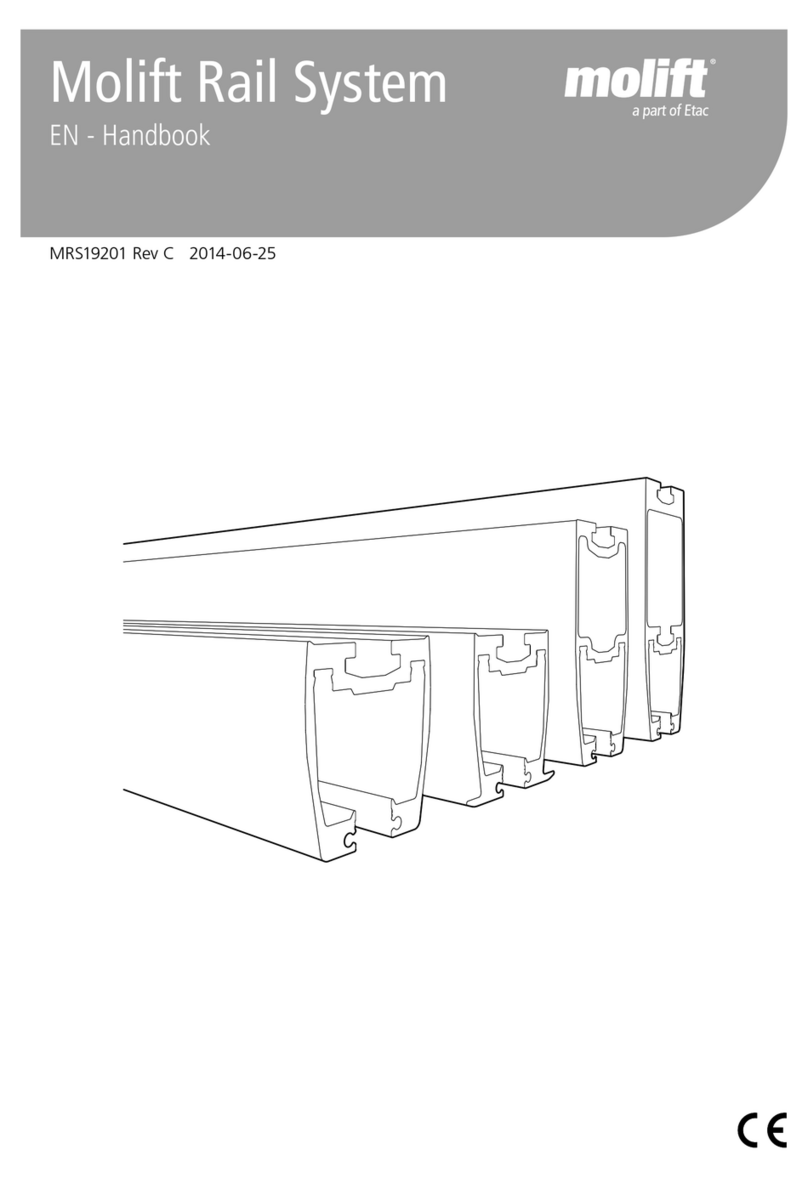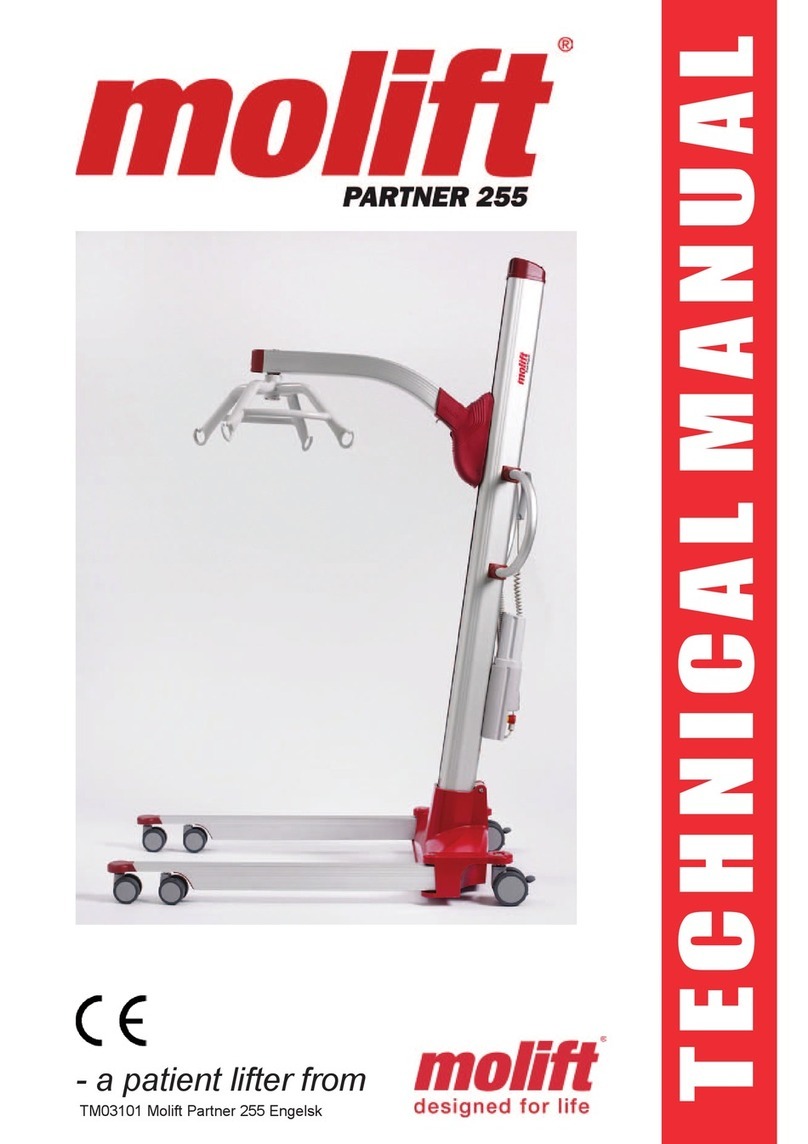Page 9 of 20
Assembly /disassembly
To be able to operate the lift, the operator must have
good knowledge of the lift, including assembly, dis-
assembly and preparation before use.
Assembly and use of charger
The battery charger shall be mounted on a vertical
wall surface close to a power outlet. The charger
shall be connected to the power outlet at all times.
Molift AS tests and charges all batteries be-
fore packing and shipment. However, all bat-
teries must be charged before use.
Unpacking
• The lifter comes in a cardboard box. Verify that
the box has no apparent damage. If damaged, -
check the contents and contact your dealer for as-
sistance if components are damaged.
• The box contains chassis, lifting column, knee
support, lifting arm, drive handle, hand control,
battery, battery charger and documentation.
Make sure that the different parts have the
same lifting capacity. If in doubt, the part
with the lowest capacity is the ruling .
Assembly of lifter
The battery must not be in the battery holder
on the column during assembly!
• Assemble the kneepad bracket rst by sliding it
onto the lifting column. In order to do that, you
must rst remove the column xing bolts and -
plate. Guide the knee support bracket onto the
column with the head of the xing knob into the
T-groove on the column. Slide the bracket up the
column to the desired position and tighten the
knob.
• Retrieve the column xing bolts and -plate and
slide it into the T-groove at the base of the col-
umn and approx. 25mm up. Tighten one of the
screws slightly to x the plate. Insert the col-
umn into the chassis - the arrow on the column
side shall be exactly aligned with the edge of
the chassis. If the column stops before the arrow
has reached the edge, you will have to retract the
column and try turning the motor spline head to
align it with the connector at the base of the col-
umn. Do not use force to press the column down.
When the column is in place, release the column
xing bolt and let the plate with bolts slide into
the corresponding groove on the chassis. Tighten
the bolts rmly using the tool found at the top of
the column.
The QR2+ column has a pin in the bottom to
be fitted in the chassis.
• Slide the driving handle onto the top of the col-
umn by guiding the head of the xing knob into
the T-groove of the column. The handle shall be
pointing upwards. Tighten the knob rmly when
the handle is in the desired position.
• Guide the wire of the hand control through the
ring at the base of the drive handle and insert the
contact into the chassis connector. The hand con-
trol has a hook enabling it to hang on the handle.
• Attach the lifting arm.
QR2: Remove the security ring from the lifting
arm. Assemble the lifting arm by holding it ap-
prox. parallel to the column and guide the hook
of the arm onto the two bolts of the trolley. The
arm is now attached to the trolley. Mount the se-
curity ring.
QR2+: Place the lifting arm, install the bolt and at-
tach with the screws. Torque 28 Nm.
If the lifting arm appears wobbly in the trolley,
try tightening the bolts on each side of the trolley
to reduce the gap.
Be careful not to put fingers or similar under
the lifting arm between arm and trolley. Dan-
ger of personnel injury.
• Place the battery in the battery holder with the
connectors facing down. Run each function of
the lifter a couple of times without load to verify
proper function.
Molift AS tests all lifters with and without
load before shipment. The control is an extra
precaution to uncover any shipment damage
and/or incorrect assembly.












